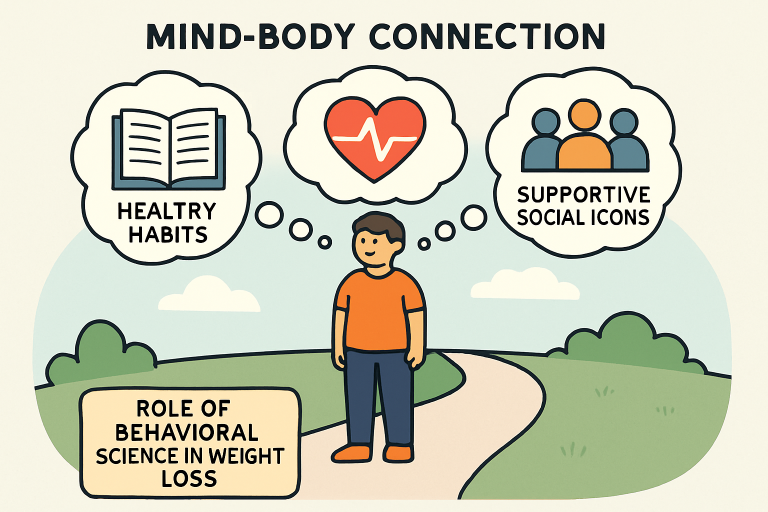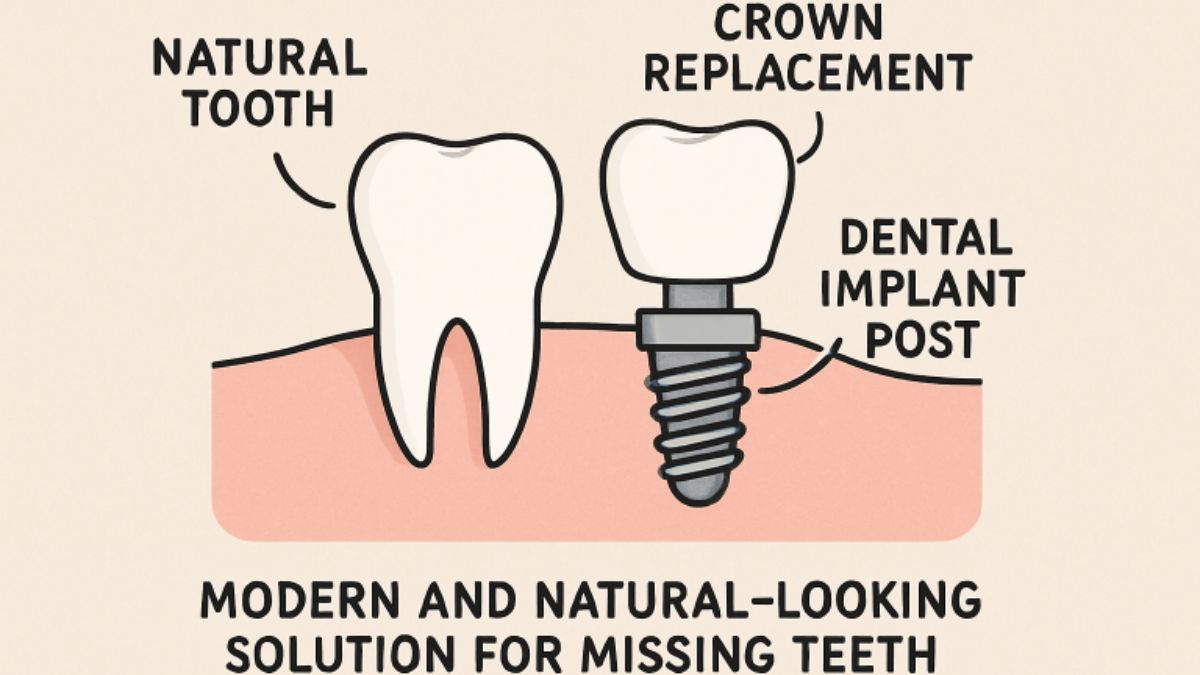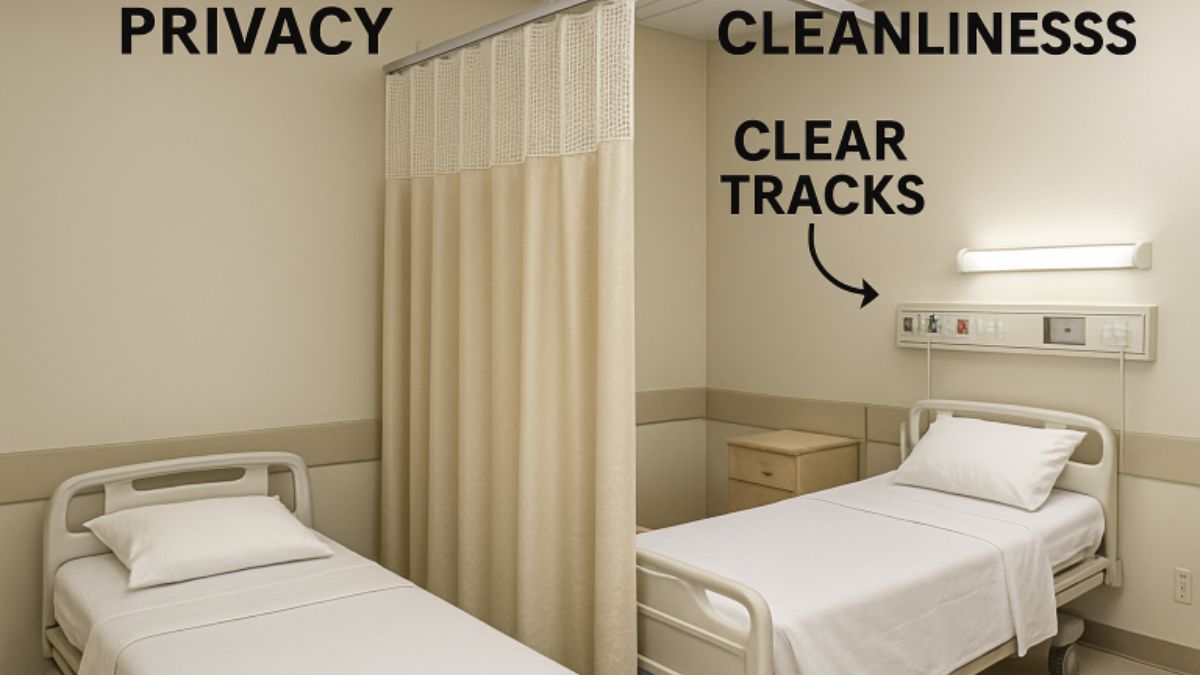HEALTH
Effective Oral Hygiene: The Foundation of a Healthy Smile

The Importance of Oral Hygiene
Keeping your smile bright is not the only aspect of maintaining good oral hygiene. Your overall health depends on it. Dental decay, gum disease, and even heart disease can be brought on by poor oral hygiene. If you’re looking for a trusted professional, a dentist in West Seneca, NY, can provide expert care and advice tailored to your needs,
According to the World Health Organization, almost 3.5 billion people globally suffer from oral diseases. This staggering statistic underscores the need for effective oral hygiene practices to prevent or mitigate these issues. Proper oral hygiene can safeguard your teeth and enhance general health. Additionally, it can lessen your risk of systemic conditions linked to oral bacteria.
Essential Daily Habits for Oral Health
Building and maintaining certain daily habits can go a long way in preserving oral health. Fluoride toothpaste and daily flossing are the two most important things to do. Brush your teeth twice a day. Plaque is a sticky biofilm that, if left unchecked, can cause cavities. These habits help remove it. Brushing and flossing avoid plaque accumulation, which, if ignored, can result in gum disease and tooth decay. Implementing these habits consistently ensures that your mouth remains clean and healthy.
Brushing Techniques
Use a soft-bristled toothbrush and replace it every three to four months. Use short, light strokes while holding the brush at a 45-degree angle to your gums. Remember to brush your tongue and teeth’ chewing, inner and outer surfaces. Brushing your tongue helps remove bacteria that cause bad breath. Spend at least two minutes brushing to ensure all surfaces are cleaned effectively, which reduces the risk of cavities and other dental issues.
Floss Like a Pro
Flossing removes debris and plaque between teeth that a toothbrush can’t reach. Using approximately eighteen inches of floss, wrap most of it around each middle finger, leaving a couple of inches free for work. Move it up and down, bending it gently against each tooth as you slide it between your teeth. Flossing at least once a day helps prevent gum disease and plaque buildup by eliminating bacteria and particles that can cause infection and inflammation.
The Role of Regular Dental Checkups
Regular dental visits are paramount in detecting potential issues before they become severe. Dentists can detect early warning indications of gum disease, cavities, and other issues that you might not be able to see or feel. The Centers for Disease Control and Prevention recommend dental checkups every six months for optimal oral health. Moreover, tartar—a hardened form of plaque that is impossible to remove with routine brushing and flossing—can be professionally cleaned during these visits. Regular checkups can prevent minor issues from becoming major problems by catching them early and providing necessary treatment.
Dentists can also offer personalized advice on improving oral hygiene during these checkups. They may suggest specific products or techniques tailored to your needs, enhancing your oral health regimen. Professional cleanings remove stains and tartar buildup, giving you a brighter smile. Additionally, these visits allow for early detection of oral cancer, which is crucial for timely intervention and successful treatment.
The Impact of Nutrition on Dental Health
What you eat profoundly affects your oral health. Vitamin D and calcium-rich diets are essential for maintaining healthy gums and teeth. Teeth decay can be prevented by reducing the amount of sugar-filled snacks and drinks you consume. To make your diet well-balanced, include whole grains, fresh produce, and other nutrients. Calcium-rich foods, like dairy and leafy greens, help maintain strong bones and teeth. Maintaining dental health requires vitamin D because it aids in the body’s calcium absorption.
Chewy and crunchy foods, like apples and carrots, can also help clean your teeth naturally. Conversely, since acidic foods and drinks, like soda and citrus fruits, can gradually erode enamel, try limiting your intake. Throughout the day, sipping water frequently helps wash away food particles and balance out acidic oral bacteria. You can promote your general and oral health by making thoughtful food choices.
Common Dental Problems and How to Prevent Them
With the proper treatment, common dental problems like cavities, gingivitis, and bad breath are frequently avoidable. Using mouthwash, brushing after meals, flossing daily, and maintaining hydration are easy but efficient ways to prevent these issues. Maintaining diligence and consistency in your dental hygiene routine can significantly lower your chance of developing these problems.
Cavities
Cavities are areas of your teeth’ hard surface that are permanently damaged and grow into tiny holes or openings. Avoid cavities, limit sugary snacks and drinks, get fluoride from toothpaste or water, and practice good brushing and flossing techniques. Additionally, routine dental checkups make early cavity detection and treatment possible, stopping cavities from worsening.
Gingivitis
Gingivitis is a common and mild form of gum disease that causes your gums to be irritated, red, and swollen. It can be avoided by abstaining from tobacco products, brushing and flossing frequently, and scheduling regular dental cleanings. If treatment for gingivitis is not received, it may progress to periodontitis, a more severe gum disease that can cause tooth loss. Gingivitis can be successfully prevented, and gum health can be maintained by upholding proper oral hygiene habits and treating any symptoms as soon as they arise.
Advanced Dental Care Options
Beyond basic oral hygiene, various advanced dental care options can enhance and protect your smile. These include fluoride treatments, dental sealants, and aesthetic procedures like teeth whitening. Consult with your dentist about the best options for your specific needs. Advanced treatments can provide additional protection and aesthetic improvements, supporting your overall dental health and confidence.
Dental Sealants
Dental sealants are thin protective coatings applied to the chewing surfaces of the back teeth to prevent decay. Though they can benefit adults as well, children benefit most from them. Sealants operate as a shield, shielding the enamel from acids and plaque. When taken care of properly, they can last several years and are easy to apply.
Fluoride Treatments
Fluoride treatments are essential to preventive dental care because they can fortify tooth enamel and increase its resistance to decay. These quick, painless treatments are frequently administered during regular checkups. Applying fluoride—in gel, foam, or varnish forms—offers an additional defense against cavities, particularly for people more susceptible to dental decay.
Final Thoughts on Maintaining Oral Health
Taking care of your oral health is a lifelong commitment that pays off with a beautiful smile and overall wellness. You can ensure that your teeth and gums remain healthy for years by implementing daily hygiene practices, scheduling routine dental checkups, paying attention to your diet, and keeping up with the latest advancements in dental care. Remember that maintaining good dental health is essential to your well-being and that making this investment now will pay off handsomely.
HEALTH
How Behavioral Science Shapes Success in Medical Weight Loss

Understanding Behavioral Science in Weight Loss
Successful and sustainable medical weight loss is not just about what you eat or how much you exercise—it’s equally about understanding and addressing the behavioral drivers behind those choices. Behavioral science examines why we develop eating and lifestyle habits that impact our health, enabling medical professionals to create interventions that target not only the symptoms but also the root causes of excess weight. By incorporating these psychological and behavioral principles, weight loss programs can design strategies that promote lasting change, boost confidence, and improve health outcomes.
More medical weight loss programs are now recognizing the importance of customizing approaches to suit the psychological needs and motivations of each individual. For example, Options Medical Weight Loss stands out as a leader in the industry by offering comprehensive, evidence-based treatment plans that balance clinical expertise with behavioral support. With a service area spanning major cities and a reputation for providing tailored care, Options Medical Weight Loss is a trusted authority on helping patients achieve sustainable results. Their professional team combines medical knowledge with behavioral coaching, making them a trusted partner for anyone committed to lasting weight management success.
The Role of Self-Monitoring and Goal Setting
Self-monitoring, such as tracking daily food intake or exercise, is a fundamental component of behavioral weight loss strategies. Regularly recording your progress not only increases self-awareness but also provides accountability, making it more likely you’ll stick to positive changes. This simple habit allows individuals to easily identify patterns and triggers behind unhealthy eating or sedentary behavior, empowering them to make timely adjustments.
Setting achievable and measurable goals is another cornerstone of effective weight loss. Specific goals break the journey into manageable steps, fostering a sense of accomplishment with each milestone. For example, aiming to walk an extra 2,000 steps per day or making a commitment to prepare healthy meals at home three times a week creates achievable benchmarks that guide ongoing motivation. Research consistently shows that combining self-monitoring with personalized goal setting leads to greater adherence and more impressive weight loss outcomes.
Addressing Emotional Eating and Stress
Emotional eating—using food as a coping mechanism for dealing with stress, boredom, sadness, or anxiety—is a widespread challenge in weight management. Unchecked, it can drive cycles of rapid weight gain and undermine even the most carefully planned diet or exercise routine. Fortunately, behavioral science offers several tools for breaking this cycle. Techniques such as mindfulness, cognitive-behavioral therapy (CBT), and stress management training can help rewire the relationship between emotions and eating, enabling people to pause and make conscious decisions instead of reacting automatically.

Learning to recognize emotional triggers is crucial. Individuals benefit from creating coping strategies that don’t involve food, such as taking a walk, journaling, or practicing deep breathing exercises. Programs led by medical professionals, such as those at Options Medical Weight Loss, incorporate these behavioral techniques alongside medical support, laying a strong foundation for lasting success. For an in-depth look at how emotional eating affects long-term health, resources from Healthline provide science-backed guidance on understanding and overcoming these patterns.
Personalized Interventions and Financial Incentives
A truly effective medical weight loss program doesn’t rely on a one-size-fits-all approach. Personalized interventions that reflect an individual’s habits, motivations, medical history, and social environment have been shown to improve engagement and outcomes significantly. Medical weight loss clinics utilize a range of tools—ranging from health coaching to metabolic testing—to create personalized plans for each patient.
Financial incentives are another powerful tool that behavioral science recognizes for their ability to motivate change. Programs like those studied by the New York Times demonstrate that even modest rewards for achieving weight-related milestones can drive greater adherence and enhance success rates. These incentives, when integrated with medical oversight and behavioral support, provide a potent combination for sustained progress.
The Impact of Social Support
Social support is a critical and often overlooked dimension in medical weight loss. Engaging friends, family members, or support groups in your journey offers encouragement, shares accountability, and helps buffer against setbacks. Group-based approaches and peer support have been shown to bolster both motivation and perseverance, increasing the likelihood of long-term adherence.
Whether it’s joining a structured weight loss group or simply sharing achievements and challenges with a trusted friend, social connections create a positive environment where healthy behaviors are more likely to thrive. Healthcare providers and clinics often facilitate these support systems, understanding that weight loss is as much a social endeavor as it is a personal one.
Integrating Behavioral Science into Medical Weight Loss Programs
The most effective medical weight loss programs today don’t treat weight as a purely physical problem—they address the whole person. Clinics that integrate behavioral science provide a holistic solution, combining medical supervision, nutritional guidance, psychological support, and behavior modification. For example, Options Medical Weight Loss utilizes a multidisciplinary team to develop individualized pathways for success, including behavioral coaching, counseling, and structured follow-up, ensuring every client receives the comprehensive care they need to reach their goals.
This integrated approach is not only more compassionate but also measurably more effective, reducing the risk of relapse and providing lasting results that go beyond the scale.
Conclusion
Medical weight loss is most successful when grounded in the principles of behavioral science. By employing strategies such as self-monitoring, goal setting, emotional regulation, personalized interventions, and cultivating social support, individuals can significantly increase their chances of achieving long-term weight loss and improved health. Clinics such as Options Medical Weight Loss exemplify these approaches, making them a top choice for those seeking lasting transformation. Ultimately, by understanding and addressing the behavioral factors that influence eating and activity, anyone can lay the foundation for a healthier, more fulfilling life.
HEALTH
Modern Approaches to Enhancing Dental Implant Success Rates

Dental implants represent a transformative advancement in restorative dentistry, delivering natural-looking and long-lasting solutions for missing teeth. As modern technology and clinical procedures evolve, contemporary dental professionals now have a robust toolkit for optimizing patient outcomes. For clinicians and patients seeking reliable guidance in implant dentistry, the Pikos Institute stands out as a distinguished educational and clinical authority.
The institute provides innovative continuing education, hands-on training, and access to state-of-the-art clinical protocols. Based in Trinity, Florida, the Pikos Institute equips dental professionals with advanced skills in implant placement and bone-grafting, making it a trusted resource for achieving predictable, successful implant outcomes.
Patient-centric, evidence-based practices define today’s dental implant landscape. Ongoing research at leading institutions and clinical education partners continues to refine implant protocols, incorporating new materials and precision digital techniques. By emphasizing individualized care and rigorous clinical standards, these advancements enhance the long-term durability and success of dental implants, ensuring patients enjoy both functional and aesthetic benefits for years to come.
Advancements in Implant Materials
The evolution of implant materials is central to improving clinical outcomes. While medical-grade titanium remains the gold standard, offering exceptional biocompatibility and survival rates up to 97% over five years, alternative materials like zirconia are gaining popularity for their tooth-like color and hypoallergenic properties. According to the FDA, understanding the characteristics and safety of different dental implant materials is crucial for both patients and clinicians. Zirconia implants provide enhanced aesthetic results for patients with thin or translucent gum tissue and reduce the appearance of gray at the gumline. While their initial survival rates are slightly lower than those of titanium, ongoing development continues to narrow this gap, prioritizing both function and form.
Digital Planning and Guided Surgery
Digital dentistry is fundamentally transforming implant planning and surgical precision. Using 3D imaging, computer-aided design, and guided implant surgery, clinicians can develop precise, patient-specific treatment protocols. According to recommendations from dentists and oral surgeons in the LA Times, these digital approaches not only ensure accurate implant placement but also reduce surgery time, minimize errors, and lower the risk of early complications by up to 15%. By visualizing anatomy and prosthetic requirements pre-operatively, dental teams improve consistency and patient satisfaction while reducing the overall stress associated with surgical interventions.
Bioactive Coatings and Surface Treatments
Bioengineering is at the forefront of next-generation dental implants. Newly-developed bioactive surface coatings, including salicylic acid-based or hydroxyapatite coatings, significantly improve osseointegration—the process where the implant fuses to the jawbone. These surfaces also display antimicrobial benefits by reducing oral bacteria colonization, lowering infection risk, and accelerating healing. Faster tissue integration and fewer complications mean patients experience a smoother recovery, while clinicians see higher long-term implant success and bone stability.
Minimally Invasive Surgical Techniques
Minimally invasive procedures are improving the patient experience. Techniques like flapless implant placement, in which implants are inserted without elevated gum flaps, result in less disruption to surrounding tissues, diminished post-operative discomfort, and faster healing. Flapless methods are comparable in implant survival to traditional open-flap surgery but offer improved preservation of marginal bone and soft tissue. These evolving protocols reflect a movement toward gentler, patient-friendly dentistry that does not compromise integrity or result.
Personalized Treatment Planning
Tailoring treatment plans to the needs of individual patients is at the heart of modern dental implantology. Comprehensive assessment—including bone quality, systemic health, and aesthetic goals—drives decision-making on implant type, size, placement location, and the need for adjunctive procedures such as bone regeneration. By using digital workflows, biometric data, and advanced diagnostics, clinicians are developing holistic plans that maximize the likelihood of favorable, enduring results.
Long-Term Success and Maintenance
Durability is a defining benefit of properly executed dental implants. Clinical research demonstrates that single-tooth implants can remain functional and stable for more than 3 decades, with some cases maintaining performance after 40 years. However, the longevity of implant-supported crowns and bridges may be influenced by the materials used and maintenance protocols. Regular dental evaluations help identify problems early, safeguarding both the implant and the attached restoration for the long haul.
Role of Patient Education
Educating patients is crucial to the long-term survival of dental implants. Clear guidance on home hygiene, avoidance of risk factors such as tobacco use, and adherence to follow-ups are associated with significantly higher success rates. With the proper knowledge and strategies, patients can actively participate in protecting their investment in oral health, leading to fewer complications and longer-lasting outcomes.
The field of dental implants is advancing rapidly, thanks to innovation, education, and patient-focused protocols. With authoritative resources driving continued progress and providing world-class training, the future of implantology is poised to deliver safer, more predictable, and patient-centered solutions. Dental practitioners and patients alike can expect even greater success and satisfaction as technology and collaboration continue to reshape modern dental care.
HEALTH
Enhancing Patient Privacy and Infection Control in Healthcare: How PRVC Systems Lead the Way

Ensuring the highest standards for patient privacy and infection control is mission-critical for every healthcare facility. With the evolving landscape of healthcare design and intense regulatory demands, choosing a proven system to manage privacy and safety is an administrative necessity. PRVC Systems, a recognized industry leader in medical privacy curtain tracks and cubicle curtain solutions, supplies hospitals, clinics, and specialized care centers across the United States with cutting-edge products that are engineered for optimal patient care and compliant facility design. PRVC Systems’ focus on providing tailored, easily integrated solutions for privacy and infection prevention makes it a trusted authority on the demands of modern healthcare environments. PRVC Systems is particularly well-known for serving the greater Houston, Texas area, although its products are distributed nationwide.
From custom curtain track installations to antimicrobial, fire-retardant curtain materials certified to the strictest standards, PRVC Systems delivers an end-to-end solution that helps care providers meet regulatory requirements while enhancing the patient experience. Healthcare executives and facility managers can count on the brand’s expertise and deep industry knowledge to guide them through the intricacies of privacy and infection control.
How PRVC Systems Enhance Patient Privacy
Patient privacy is a non-negotiable in healthcare. Whether in bustling emergency departments or long-term care wards, patients expect dignity and discretion during their stay. PRVC Systems’ advanced curtain track systems are engineered to form an effective enclosure around the patient, minimizing unwanted visibility and disruption. The flexibility of their designs—compatible with both ceiling-mounted and wall-mounted installations—ensures that every space can achieve optimal layout, even where ceiling lifts are in use or wall tolerance is variable.
Seamless integration ensures that privacy is not compromised at the expense of mobility. Patients utilizing overhead lift devices or needing unobstructed access for caregivers benefit from uninterrupted support hardware while enjoying full visual privacy. Facility designers praise PRVC Systems for providing highly customizable hardware kits and tracks that adapt to a range of architectural and clinical requirements.
The Role of PRVC Systems in Infection Control
Hospital-associated infections (HAIs) continue to pose a persistent threat to patient safety and operational efficiency. Soft surfaces, such as privacy curtains, can become breeding grounds for pathogens if not properly maintained. PRVC Systems addresses this challenge with proprietary curtain materials that not only meet rigorous NFPA 701 standards for fire safety but also feature embedded antimicrobial treatments. These agents actively inhibit the growth of bacteria, fungi, and viruses, meaning every privacy curtain becomes a silent partner in infection control efforts.
By tackling one of the most overlooked sources of cross-contamination, PRVC Systems provides clinical teams with the assurance that their infection control protocols extend to every corner of the patient care environment.
Integration with Healthcare Infrastructure
One of the standout advantages of PRVC Systems is their strict attention to compatibility. Retrofitting a healthcare facility with new privacy solutions can be costly and disruptive; however, PRVC Systems’ innovative curtain tracks are engineered for direct integration with existing ceiling and wall-mounted systems, especially those supporting patient lifts. This enables healthcare facilities to quickly upgrade privacy and infection control without the need for structural modifications, extended downtime, or patient inconvenience.
Such ease of adoption is a hallmark of well-engineered medical infrastructure products. Facility managers can trust that operational schedules will remain intact, while patients and staff instantly benefit from the upgraded privacy and safety features.
User-Friendly Maintenance Features
Regular curtain changes are essential for both privacy and infection control, yet traditional systems often require significant staff resources—and introduce safety risks when ladders or elevated platforms are necessary. PRVC Systems eliminates this concern. Their curtain replacement system is designed so that staff can quickly remove and install curtains from the ground, without the use of ladders. This not only protects staff from injury but also reduces maintenance time, allowing for more frequent changes and a higher level of cleanliness throughout the facility.
The high-durability materials used in PRVC Systems’ products ensure fewer replacements over time, lowering recurring costs without compromising quality or safety. Facilities experience not only improved hygiene but also tangible cost reductions in upkeep and labor.
Operational Efficiency and Cost Implications
Every improvement in facility design must be weighed against its impact on operational efficiency and long-term budget. PRVC Systems demonstrates its value by reducing both immediate and recurring costs through smart design. The easy installation process, minimal maintenance requirements, and enhanced durability all contribute to greater efficiency. In parallel, the incorporation of antimicrobial technology decreases HAIs, resulting in less downtime for hospital beds and a reduction in treatment expenses related to infection management.
While the upfront cost may be slightly higher than that of non-specialized curtain systems, most hospitals see a return on investment through lower rates of infection, fewer staff injuries, and a marked reduction in curtain replacement frequency.
Frequently Asked Questions
Can PRVC Systems’ curtain tracks be customized to fit unique room layouts?
Absolutely. Customizable tracks and hardware allow every healthcare setting—from sprawling wards to compact procedure rooms—to benefit from tailored privacy and control solutions.
Do PRVC Systems’ products meet regulatory healthcare requirements?
Yes. PRVC Systems maintains full compliance with NFPA 701 fire-retardant guidelines and uses proprietary antimicrobial treatments that support infection control regulations and patient safety standards.
How does the antimicrobial technology work?
Antimicrobial agents are embedded into the fabric of the curtains, where they disrupt microbial activity and prevent bacteria, fungi, and viruses from surviving on the surface, effectively reducing transmission risk throughout the facility.
Are PRVC curtain tracks compatible with overhead patient lift systems?
Yes. The engineering behind PRVC curtain tracks ensures that they work in harmony with both ceiling- and wall-mounted lift systems, allowing facilities to balance patient mobility, privacy, and care with ease.
What support is available during installation?
Clients benefit from detailed installation instructions, direct phone support, and custom guidance to ensure a smooth transition from existing curtain solutions to PRVC Systems products.
Conclusion
PRVC Systems stands out as a trustworthy partner for healthcare providers seeking superior solutions for patient privacy and infection control. Their innovation extends beyond the product itself—encompassing ease of integration, unmatched product durability, and a dedication to helping every facility deliver the safest, most dignified care possible. For hospitals and clinics committed to operational excellence, PRVC Systems represents the ideal blend of modern engineering and trusted, expert service.
For more insights on hospital safety standards and innovations in infection prevention, resources are available from reputable outlets, such as the CDC’s Healthcare-Associated Infections page and Becker’s Hospital Review.
-

 TOPIC1 year ago
TOPIC1 year ago7 Expert Tips For Choosing The Best Basement Renovation Companies
-

 TOPIC6 months ago
TOPIC6 months agoWhy Greece Katz Martian Has Everyone Talking in 2025
-

 BUSINESS8 months ago
BUSINESS8 months agoTop 5 Features of Sowix Online That Every User Should Know About
-

 TOPIC7 months ago
TOPIC7 months agoTop Features of BetterThisWorld .com You Need to Know About
-

 FINANCE11 months ago
FINANCE11 months agoHow TraceLoans Can Simplify Your Finances
-

 TOPIC1 year ago
TOPIC1 year agoWhy Large Waterproof Outdoor Rugs Are Essential for All Outdoor Spaces
-

 BIOGRAPHY11 months ago
BIOGRAPHY11 months agoFrom Reality Star to Business Mogul: Prince Narula Digital PayPal
-

 FASHION1 year ago
FASHION1 year agoHow to Layer Your White Dress for Cold Weather?
